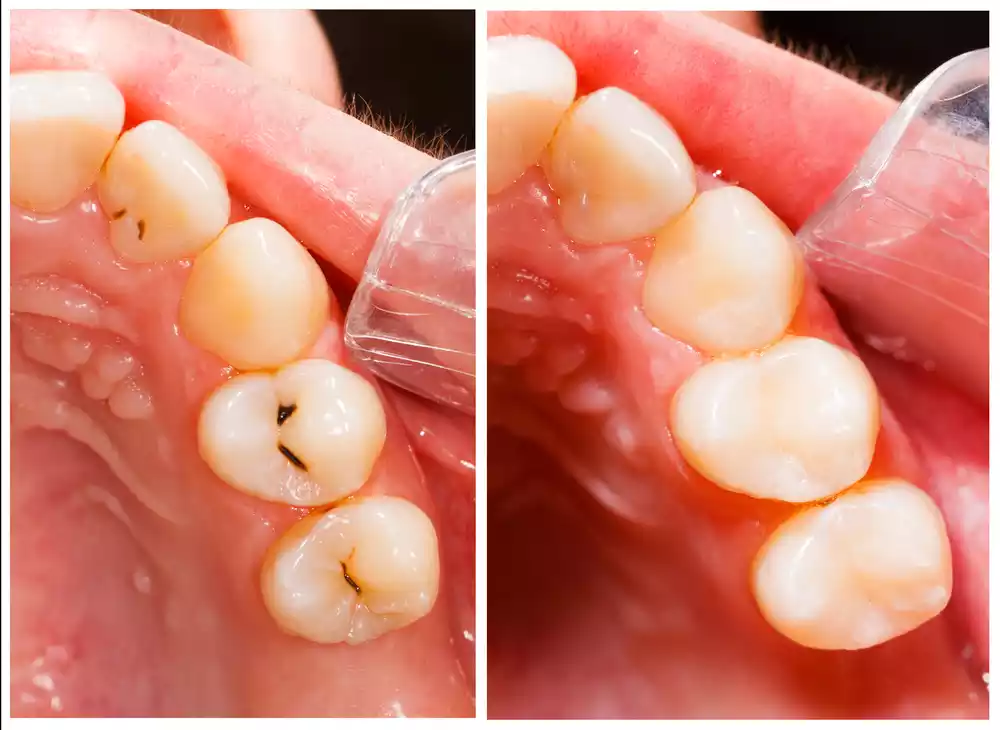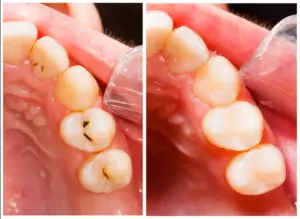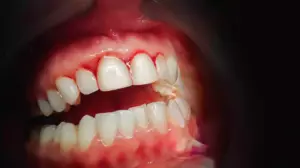Tooth decay is one of the most common oral health problems affecting people of all ages worldwide. Often the result of poor oral hygiene, tooth decay not only impacts the aesthetic appeal of a smile but also poses significant health risks. When left untreated, tooth decay consequences can be severe, affecting overall health and quality of life. Fortunately, there are effective treatment options available..
What is tooth decay?
Tooth decay, or dental caries, is a process that involves the breakdown of tooth enamel due to acid-producing bacteria in the mouth. These bacteria feed on sugar from foods and drinks, producing acids that erode the enamel and cause cavities. Initially, tooth decay may present as white spots on the teeth, but over time, it can progress to holes or cavities if not addressed promptly.
Tooth decay consequences
Understanding tooth decay consequences is crucial for both preventing and treating this common dental issue effectively. Here are some of the key consequences associated with untreated tooth decay:
1. Toothaches
One of the earliest tooth decay consequences is a persistent toothache. As the decay progresses and reaches the inner layers of the tooth, it can irritate the sensitive nerves, leading to pain and discomfort. This pain can be constant or occur only when eating, drinking, or biting down.
2. Tooth sensitivity
Tooth decay can lead to increased sensitivity, especially when consuming hot, cold, sweet, or acidic foods and beverages. This heightened sensitivity occurs because the protective enamel is compromised, exposing the sensitive dentin underneath.
3. Bad breath
Another consequence of tooth decay is bad breath, also known as halitosis. As bacteria break down food particles and produce acids, they also emit odor-causing compounds. These odors can persist despite regular brushing and flossing when tooth decay is present.
4. Cavities
The progression of tooth decay eventually leads to cavities or holes in the teeth. These cavities can weaken the tooth structure and make teeth more susceptible to further decay and damage. Cavities require professional intervention to prevent complications.
5. Infection or abscess
If tooth decay reaches the pulp, the innermost part of the tooth containing nerves and blood vessels, it can lead to an infection or abscess. This painful condition can cause swelling, fever, and a pus-filled pocket near the infected tooth, and requires prompt dental treatment.
6. Tooth loss
Severe tooth decay consequences can include tooth loss. When decay undermines the structural integrity of a tooth and cannot be effectively treated, extraction may be necessary to prevent the spread of infection.
7. Impact on overall health
Tooth decay does not only affect oral health but can also have broader implications on overall health. Bacteria from tooth infections can enter the bloodstream, potentially leading to systemic issues and affecting the heart, lungs, and other vital organs.

Treatment options for tooth decay
Addressing tooth decay promptly is essential to prevent its progression and mitigate negative consequences. Here are some common treatment options available:
1. Professional cleanings
Regular dental cleanings are vital for removing plaque and tartar that cannot be removed by brushing and flossing alone. Professional cleanings help prevent tooth decay and its consequences by keeping teeth and gums healthy.
2. Fluoride treatments
Fluoride treatments can help to reverse early tooth decay by remineralizing weakened enamel. Fluoride strengthens the enamel and helps restore areas affected by demineralization, reducing the risk of further decay.
3. Dental fillings
Dental fillings are the most common treatment for cavities. After removing the decayed portion of the tooth, the dentist fills the cavity with restorative materials such as amalgam, composite resin, or ceramic, restoring the tooth’s function and appearance.
4. Root canal therapy
If tooth decay reaches the pulp and causes infection, a root canal may be necessary. This procedure involves removing the infected tissue from the pulp chamber, cleaning and disinfecting it, and then sealing it with a filling to prevent further infection.
5. Crowns
In cases where a tooth is significantly weakened by decay, a dental crown can be used to restore its strength and appearance. A crown covers the entire tooth, providing protection and durability.
6. Tooth extractions
When tooth decay has severely damaged a tooth beyond repair, extraction may be the only option. Extracted teeth can be replaced with dental implants, bridges, or dentures to restore oral function and aesthetics.
7. Preventive measures
The best way to address tooth decay consequences is through prevention. Maintaining good oral hygiene practices, such as regular brushing and flossing, coupled with a healthy diet and routine dental visits, can significantly reduce the risk of decay.

Keeping your smile healthy
Understanding tooth decay consequences emphasizes the importance of diligent oral care and professional intervention when needed. By recognizing the impact of tooth decay and seeking timely treatment, individuals can protect their oral and overall health.
For those seeking expert dental care, Dental 6&E is the preferred choice among dentists in Tijuana. Our experienced team is committed to providing comprehensive treatment options tailored to each patient’s unique needs, ensuring optimal results and a healthy smile.
Prioritize your oral health today
Tooth decay consequences highlight the significance of preventive care and professional treatment. By taking proactive steps and partnering with experienced dental professionals, you can safeguard your smile against the effects of decay and enjoy a lifetime of oral health.






